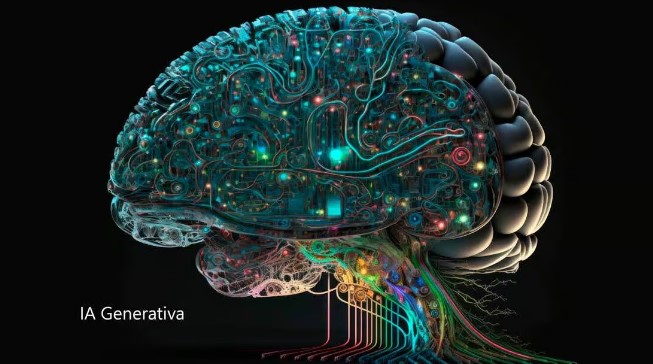Source: https://innovationlatam.com/
One of the heated discussions in our community at the beginning of the month was about the use of generative AI in credit risk assessment as an alternative to the score to help democratize access.
The question arose during the launch webinar and generated a very rich conversation among the members. Juliana Cunha, Onboarding PM at Thunes - a B2b company that works with Cross-border payments - and a lawyer, brought to the conversation interesting numbers of success stories from her knowledge and suggested that in the tumbling phase for accounts denied by AI, there should be a manual validation to check the adjustments. "And how accurate the system is, until the full migration to technology is made."
A specialist in leadership, technology and innovation, who has been working in the implementation of technology for the financial sector for some time, member Thiago Vespa pointed out that LLM (Large Language Model) is based on a linguistic and statistical model, based on attention, which is why it is more suitable for texts and as an aid to risk assessment analysis. "LLM has its function, it's not a silver bullet, but each application requires the right tool!" he said.
He argued: "Anyone who uses generative AI alone for risk analysis is putting their business at risk by relying on a linguistic model. In the case of predictive credit analysis, the best model would be Supervised Machine Learning models (if you have the team for it) with explained AI, or something combined with a model based on Bayesian networks, clustering of customers with a risk profile (k-means, for example) with time series analysis."
To further broaden our view of what is already happening in the market and what the outlook is, we interviewed Elias Sfeir, president of ANBC (National Association of Credit Bureaus). Check it out!
IA4FIN - How does ANBC believe that generative AI can be applied in credit risk assessment as an alternative to the score to help democratize access, becoming a threat to the bureaus, or does it make more sense to talk about enhancing the scores proposed in the market today?
ANBC closely monitors the impact of new technologies on the sector and believes that innovative tools, such as more advanced analytical methodologies with AI, can be great allies in improving traditional credit score models. These solutions are complementary to the methods already consolidated in the market and offer the possibility of including new layers of analysis, which increase precision and personalization when granting credit.
The credit score, as a consolidated tool, will continue to play a fundamental role, and new analytical approaches can add value by incorporating additional and contextual information, increasing financial inclusion and access to credit in a responsible manner.
How has ANBC articulated this issue among its members in order to contribute to the evolution of credit bureaus in the country?
ANBC promotes an environment of continuous and collaborative discussion among its members, through working groups focused on AI analysis. Recently, in a panel dedicated to the topic, we explored how new methodologies can help democratize credit, reducing barriers for underserved populations and increasing security in analysis. This exchange of experiences and best practices between bureaus has been essential to aligning the sector with the new demands of the market.
Externally, ANBC has participated in panels on the use of AI in the credit process with different sectors, fostering debate that enriches the understanding of the use of AI and promotes the responsible use of technology.
How advanced are the projects among ANBC members?
ANBC members are at different stages of developing initiatives that use cutting-edge technologies to improve their solutions for the credit ecosystem. Potential actions include: the use of complementary data to traditional financial history, for greater inclusion; predictive analysis tools, with a focus on greater personalization and efficiency; scenario simulations tailored to the needs of different consumer profiles, and use in fraud prevention tools.
These advances reflect the bureaus' commitment to the continuous modernization of their practices, always in line with ethics and current legislation.
You have been leading the discussion on an important issue, the Positive Registry, which holds extremely valuable data for the ecosystem. How is this data being processed today? Is generative AI being used to boost the results of the numbers collected, or is there a project in this direction?
The Positive Registry is a key element in strengthening the credit market in Brazil. Its data, which gathers information on consumers' credit history, is widely used to generate more robust and inclusive credit models.
The bureaus are currently working hard to transform this information into practical solutions that offer greater precision in risk analysis. Among the projects being studied are initiatives to further refine analysis models and explore how positive data can open up new credit opportunities, reduce defaults, detect fraud and prevent over-indebtedness, always with transparency and security for the consumer.
Could you list some of the main challenges in implementing generative AI for this purpose, in your view?
While technological advances bring countless opportunities, they also present points of attention necessary for the effective implementation of AI. In this regard, the credit sector is working to:
- Ensure impartiality and inclusion in the analysis models, avoiding unlawful or abusive discrimination.
- Respect the rules on the protection and responsible use of consumer data.
- Align innovation with existing regulations, preserving the transparency and predictability of processes where appropriate.
- Develop technological infrastructure and professional training to support new methodologies.
ANBC believes that AI challenges can be met with dialog, cooperation and a continued commitment to market best practices.


